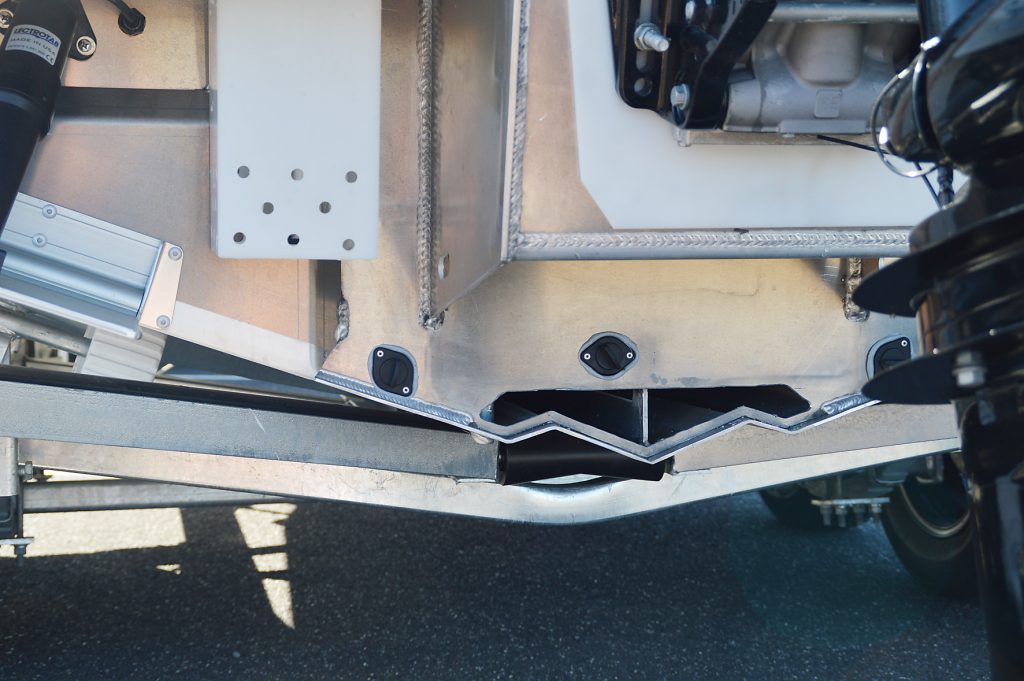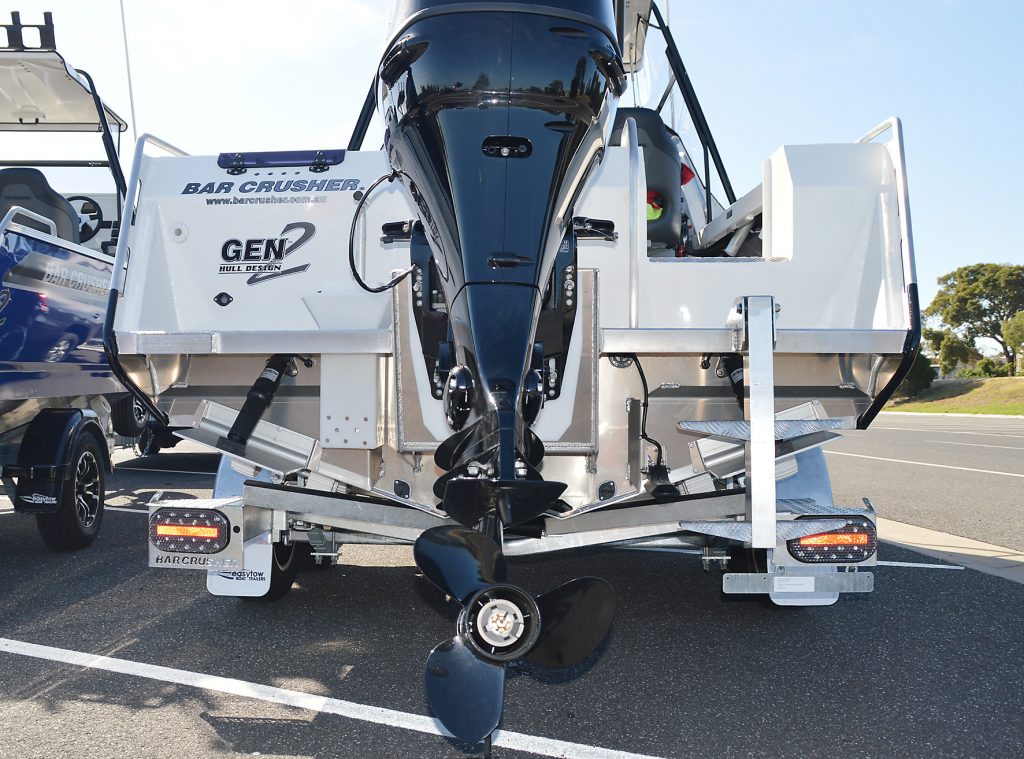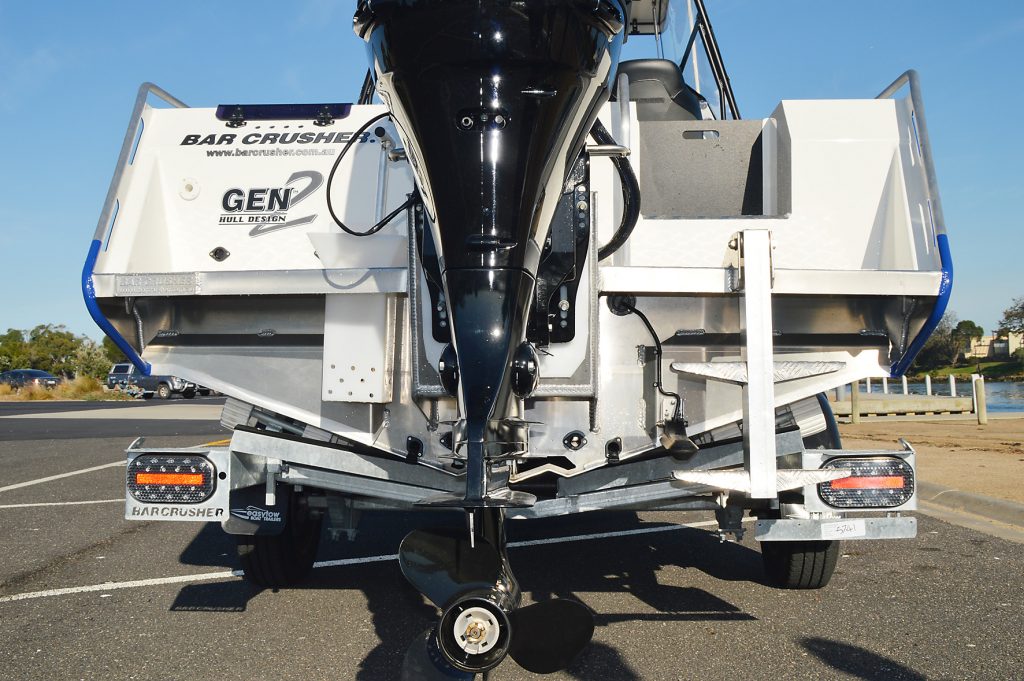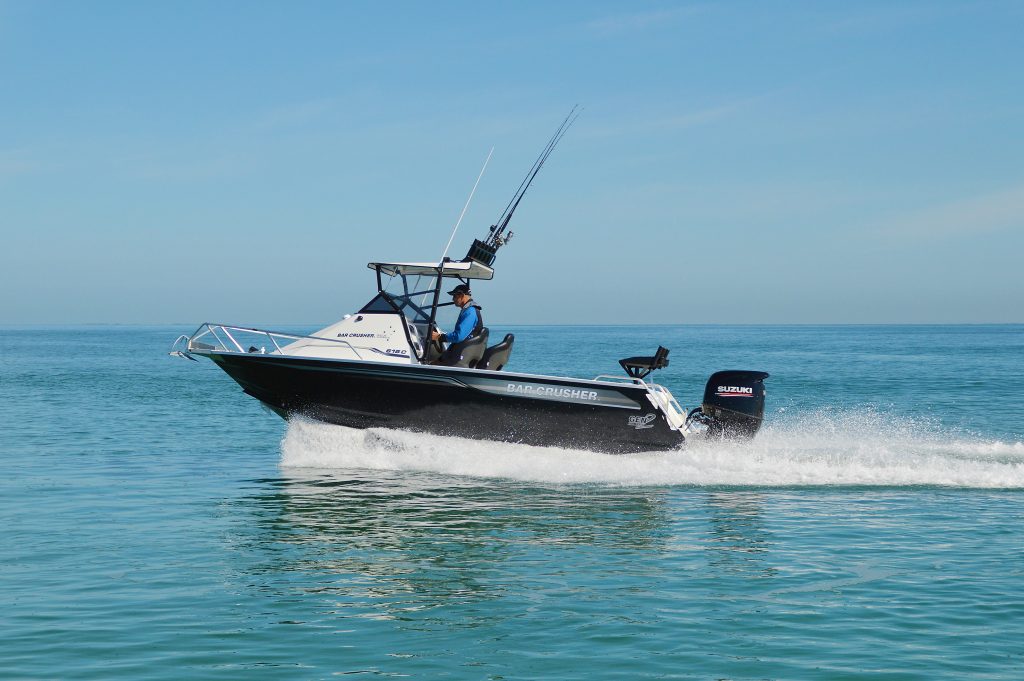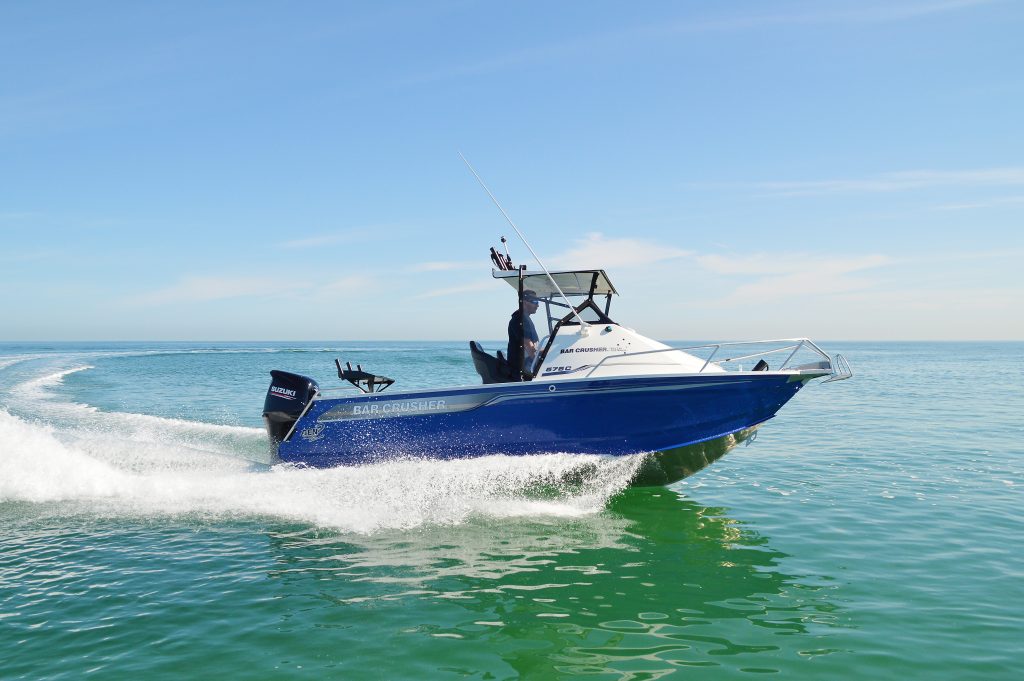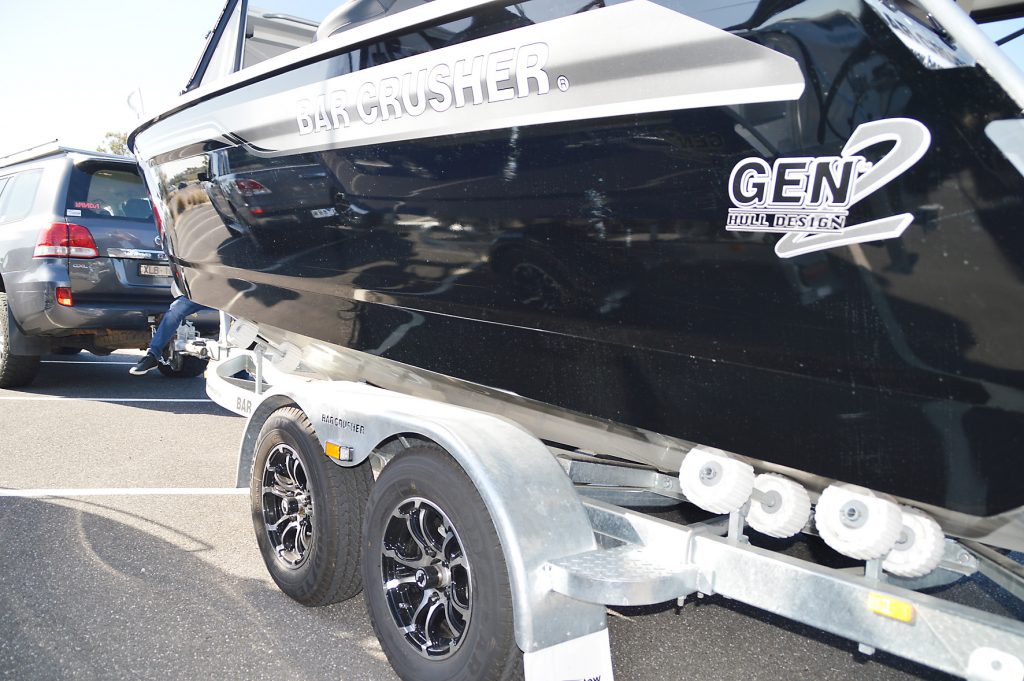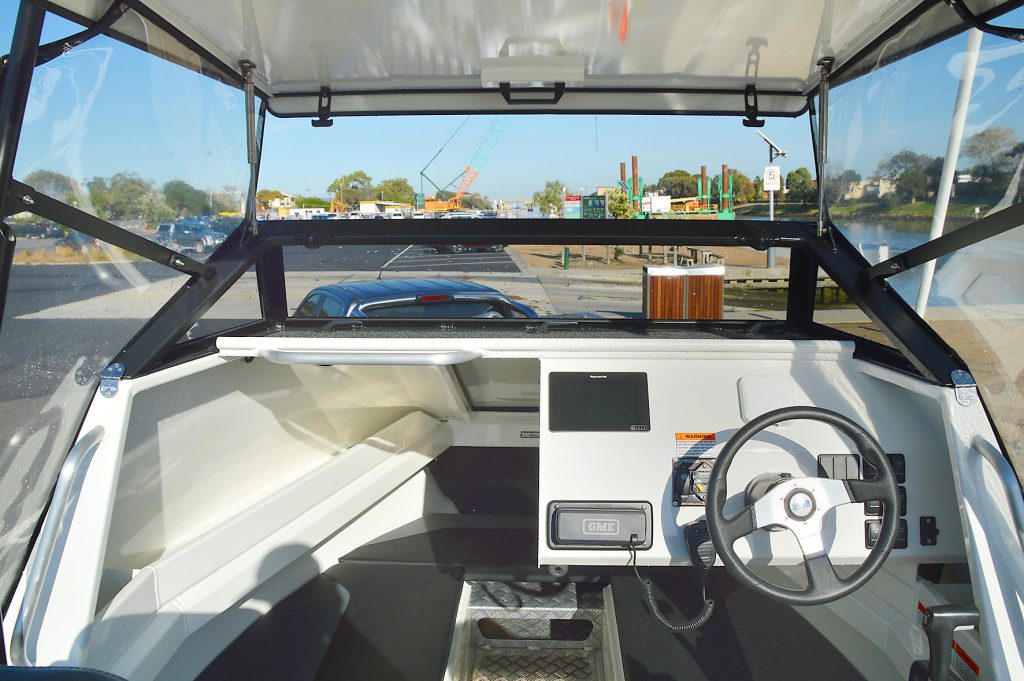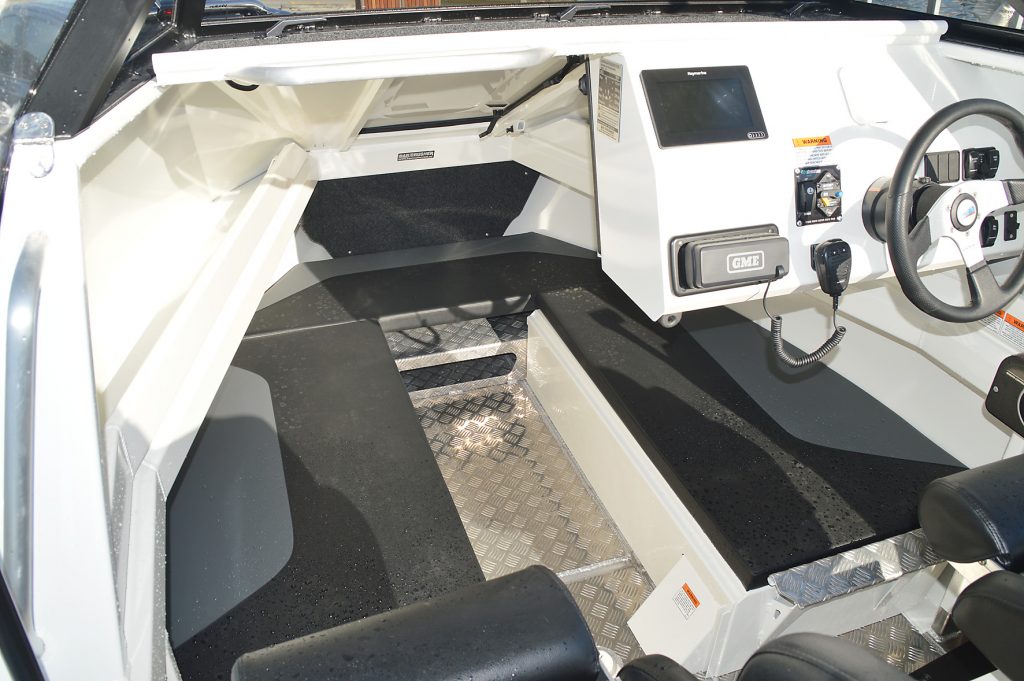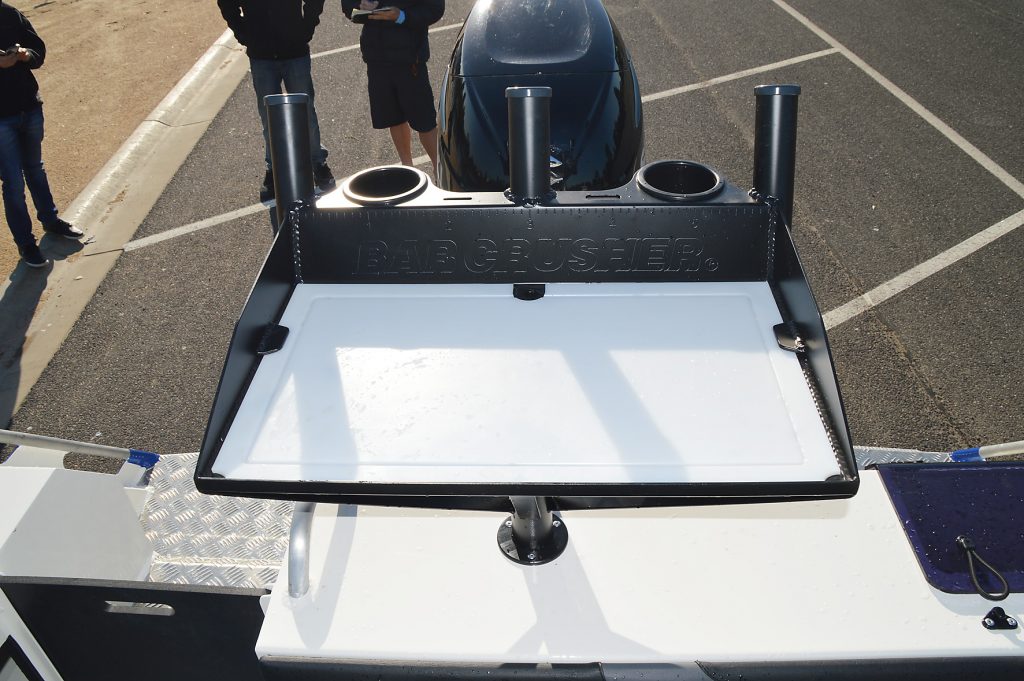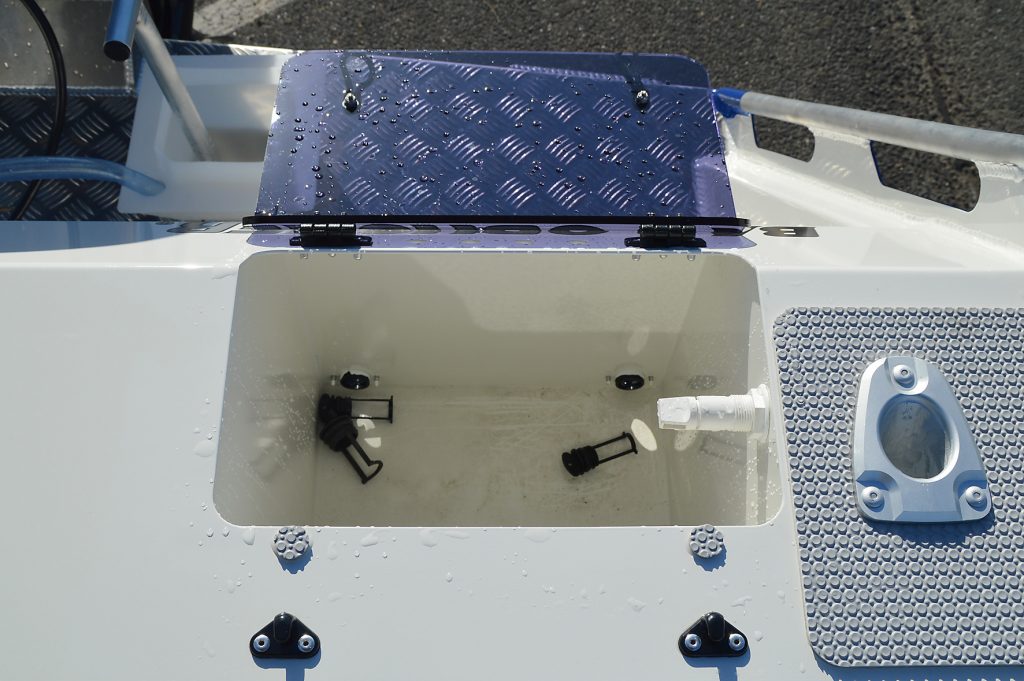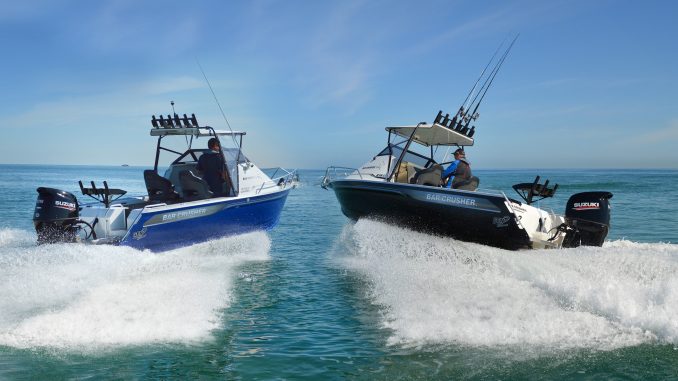
by Steve Morgan •
We recently had the opportunity to test a couple of Bar Crushers out on Port Phillip Bay in Melbourne; the 5.75m and 6.15m Cabin versions that are incredibly popular rigs in the Bar Crusher range.
Instead of presenting a couple of very similar boat tests, we thought it’d be a great opportunity to look at the similarities and differences in these two rigs to help you make the decision about which one is the best for your fishing and boating needs.
And although there’s only a legal snapper-and-a-half difference in length between these boats, it equates to a lot more than you’d think by the time the boats are on a trailer and ready to fish.
BAR CRUSHER 101
Bar Crusher is a Melbourne-made boat that’s famous for its build quality, finish and stability at rest through its water ballast system. Both of these boats feature Bar Crusher’s Gen 2 hull design with incorporated water ballast system.
Overall, the Bar Crusher hulls are a little narrower than most hulls for their length, which explains their sea legs. At rest, the water ballast fills up and sinks the chines deeper in the water, giving the hull greater stability.
When you take off, the water virtually instantly runs out the back of the cavity, vented through the anchor well. It’s a neat system that’s stood the test of time.
“The length beam equation in a bit of a dark art that I think we’ve got pretty much right for both these hulls,” said Bar Crusher’s Sales Manager, Matt Urzia, who is much more comfortable 10ft above the water off the back of a wave than he is in front of a camera.
Matt also outlines the standard feature list in these boats, which includes many that are options on most other brands.
“These boats come with a bait board, boarding ladder, through transom door, bilge pump, twin batteries, live bait tank, hard top roof, clears and a rocket launcher,” said Matt, “You only need to choose your electronics like sounder, radio and maybe an anchor winch to complete the package.”
WHAT DO WE RECKON?
After looking at the differences between these two rigs, there’s a couple of conclusions that we’ve come to.
Firstly, these rigs’ standard inclusions are, indeed, very generous and the fact that they’re matched with locally made Easytow trailers means that Bar Crusher will ensure that the cradle is suitable for the hull.
Urzia also says that if you want a single axle or twin axle on either rig, that’s legal and achievable. So, you’d opt for a twin axle if you’re doing a lot of highway miles; or, a single if you need manoeuvrability or use your boat locally most of the time.
We’re particularly impressed with the cleverness of the fold-down hard top and windscreen that allows you to fit these boats in most garages.
If you usually fish with one to two anglers, locally, and want a cheaper (by around $10K) rig that’s a little easier to launch, store and handle by yourself, then the 575 may be the rig for you.
If you like to travel more to fish and do it with a couple of mates and want a bigger tank that translates to more range, then the 615 will offer all of these benefits, and it’s price tag justifies the extra abilities.
It’s a simple conclusion and definitely stands up to the ‘boat ramp test’, which is the nautical version of the ‘pub test’.
For more information, visit www.barcrusher.com.au or talk to the guys at the Melbourne Boat Show. They’ll have everything you need at both of these places to help decide which is the best Bar Crusher for you in their range.
DIFFERENCE TABLE
Feature 575C 615C
Length: 5.75m 6.15m
Beam: 2.15m 2.25m
Material: 4mm bottom/3mm sides 4mm bottom/4mm sides
Trailer: Single axle for local trips twin axle for longer trips
BMT weight: 1360kg 1500kg
Internal gunwale height: 730mm 780mm
Height on trailer: 2.15m 2.20m
Horsepower: 115hp 140hp (max. 150hp)
Price: from mid-$50K from mid-$60K
Top Speed: 62km/h@6,000rpm 60km/h@6,000rpm
Best economy: 2.6km/L@4,400rpm 2.7km/L@3800rpm
Theoretical range: 280km 370km
Price: from mid-$50K from mid-$60K

